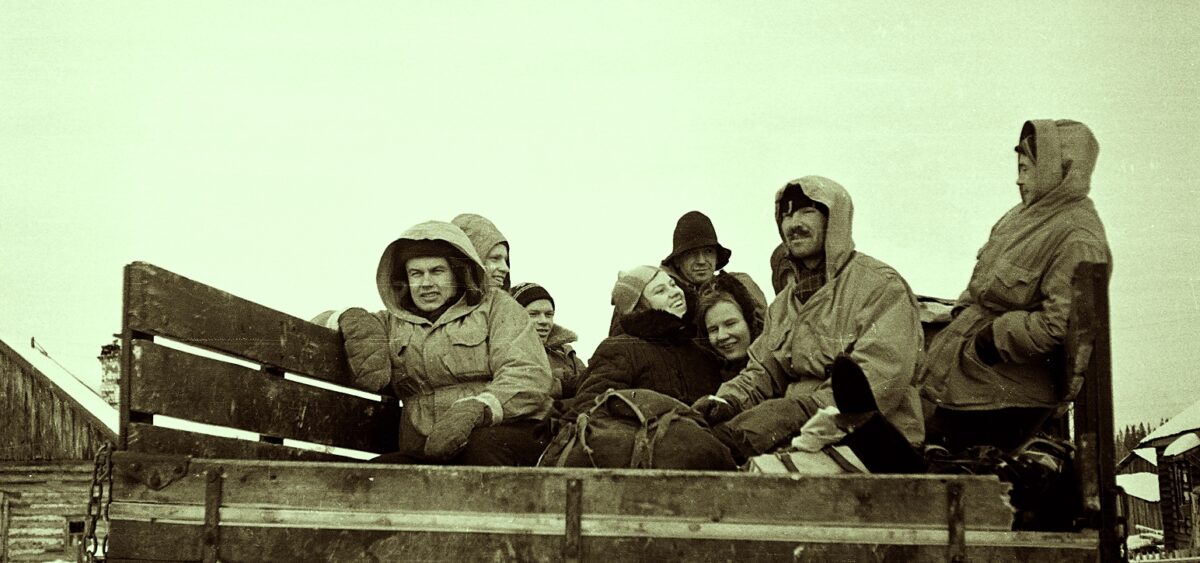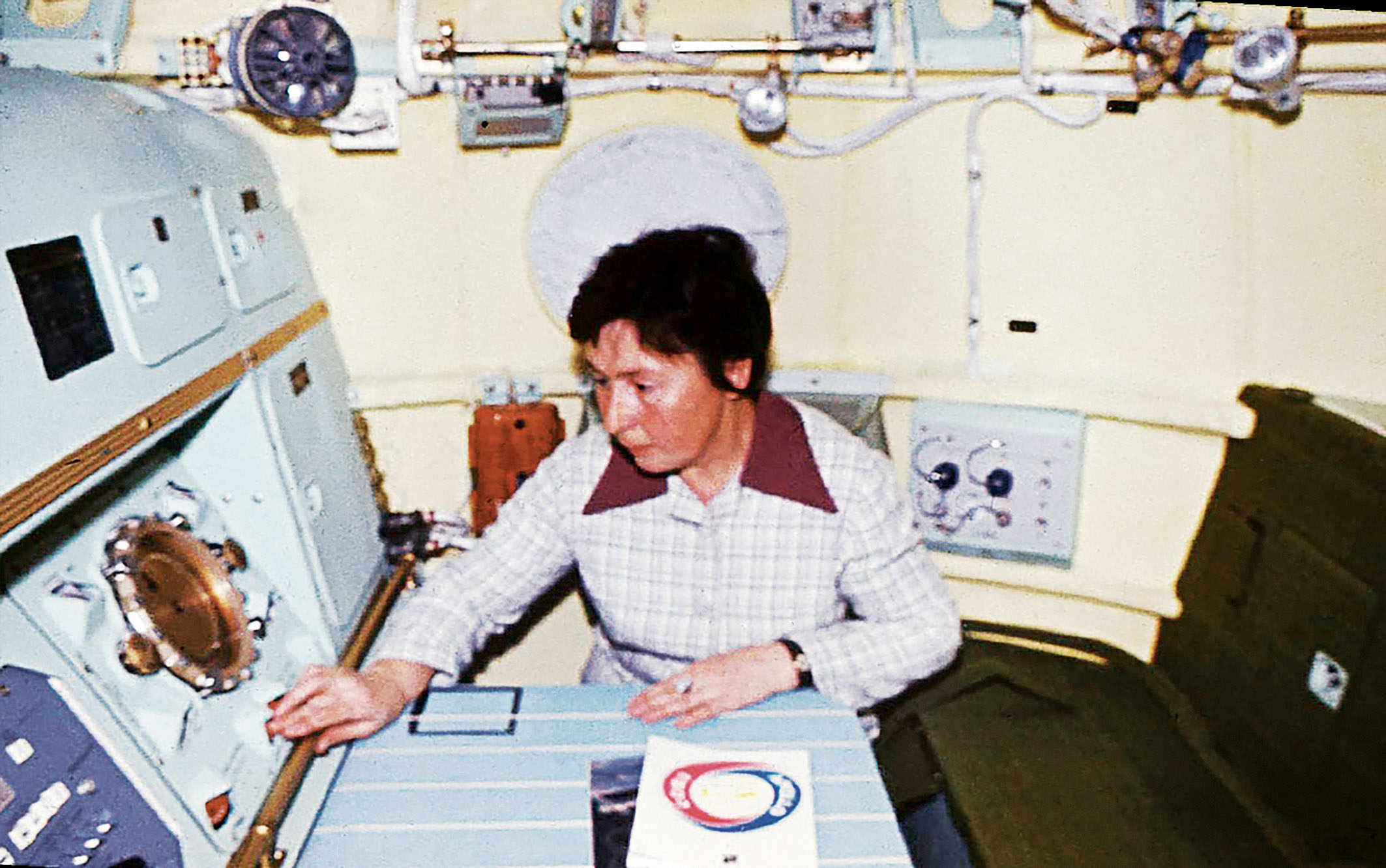
In the summer of 1958, on a trekking trip to the Altai Mountains, Igor Dyatlov shared his ambitious plan: he wanted to lead an expedition to the northern Urals and become the first in history to reach the winter peak of Otorten Mountain. This bold idea appealed to some of the experienced hikers that accompanied him. Nikolay Thibeaux-Brignolle, Rustem Slobodin, Yuri Krivonischenko and Yuri Yudin expressed their readiness to take the risk and asked Dyatlov if they could join his team.
Everyone knew that the terrain around Otorten was hostile, dangerous and challenging. Although the altitudes were moderately high and the slopes rather gentle, in winter-time hikers had to deal with harsh weather conditions, mostly with freezing temperatures. In the 1950s, the elevation of Otorten Mountain was estimated to be 1182 metres above sea level. Dyatlov understood that the main challenge wasn’t to reach the summit, but to get to its foot through the snow-covered and ice-bound taiga. The journey could be hindered by strong winds, blizzards and massive snowdrifts, which in river valleys reached almost two metres. Some parts of the northern Urals were inhabited by the indigenous Mansi people, and others were their hunting grounds. Hikers wouldn’t be able get any help and would have to rely solely on themselves.
Apart from Dyatlov, Lyudmila Dubinina had also considered organizing a winter expedition to Otorten. She knew the northern Urals well – a year earlier, also in wintertime, she had led a trekking tour to Chistop. She discussed this plan with Vladislav Bienko, her friend from the sports club. They wanted to go through with it, but soon realized that Dyatlov was planning to get to the same place at the same time, and decided to join him instead.
Preparations started in autumn. To cover the distance of over 300 kilometres, the group was going to move by train, bus, on skis and on foot. Before they set off, Dyatlov had to complete a number of demanding tasks: raising funds to cover expedition costs and the purchase of essential equipment, designing the route, drawing up a list of participants and dealing with arduous administrative work.
He believed that their expedition would be granted approval, not only because they had a lot of trekking experience and valuable connections in the right places. This, however, was also important, given the political dimension of the trip. It was organized to celebrate the 21st Congress of the Communist Party of the Soviet Union, centred around the country’s economic growth. The speeches of the delegates were scheduled between 27th January and 5th February. At the same time, the hikers – most of whom were part of Komsomol [‘All-Union Leninist Young Communist League’ – trans. note] – would strive to be the first in the world to reach the snow-covered peak of Otorten. The success of the expedition was meant to symbolize the economic success of the country, while the young hikers’ effort was considered a tribute to both the Party and the motherland.
To get the approval, Dyatlov first had to carefully plan the route and prove that his team was adept and in good health (which had to be confirmed by the medical committee). He didn’t worry about the last two requirements; his team consisted of seasoned hiking enthusiasts, whose achievements were widely recognized. It was the route planning that was a major problem.
The only geological map of the Urals available back then was published in 1941. Its scale –1:1000000 – made it almost completely useless, though. No other maps could be accessed since they were classified as state secrets. The group needed to rely on the working notes of the tourist club members and the experience of others, including that of Lyudmila Dubinina. Zina, Igor and Nikolay were familiar with some sections of the route, too, because in winter 1957 they had visited the settlements of the Mansi – indigenous people of the Urals. The team had some luck since one of them, Aleksander Kolevatov, was entrusted with a map by his friend Ignatiy Ryagin, a geologist working in an institute that coordinated copper and gold mining in the northern Urals. The map proved extremely helpful in advanced route planning.
Dyatlov came to the conclusion that navigation based on the natural lay of the land would be the most effective. Hikers wouldn’t get lost in the taiga thanks to the Ural rivers. The route was therefore planned along the Auspii and the Lozva, which flows out of the lake at the foot of Otorten’s southern slope. After reaching the peak, the group was going to return to the Auspii river valley, and then redirect slightly to the south to climb another mountain: Ojka-Czakur. From there, trekking along the Toshemka river, they would get to the village of Vizhay and send a telegram saying that the expedition was a success.
By the beginning of the year, Dyatlov had dealt with administrative work. On 8th January 1959, the trekking trip to Otorten was approved by the Sverdlovsk city route commission, regardless of the fact that some requirements hadn’t been met. Dyatlov failed, for instance, to provide a detailed route plan and a copy of the map. He also didn’t specify what measures would be taken to ensure everyone’s safety or how to call for help in case of emergency. The approval was unlawful – it constituted a breach of the resolution on organizing tourist expeditions and the responsibilities of organizers, group leaders and participants, as well as the resolution on the city route commission, both in force since 1957.
The approval was granted by Evgeniy Maslennikov, a close friend of Dyatlov. His motivation was personal. He was the first Ural Polytechnic graduate to be awarded the prestigious title of the Master of Sport of the USSR, which Dyatlov had wanted so badly for years. Dyatlov would document his own achievements based on his older friend’s advice. Maslennikov knew that reaching the peak of Otorten would help Dyatlov fulfill his dreams, which is why instead of rejecting the incomplete application he asked him to submit the missing documents when he “had a minute”. Unfortunately, Dyatlov, who was busy organizing the expedition, forgot to do so. It wasn’t until mid-February that Maslennikov realized what had happened, but at that point the rescue team was already preparing to go the Urals. Plagued by a guilty conscience, he joined the rescuers. He was present at the site of the incident when Dyatlov’s body was found.
Formal approval made the preparations go faster. The hikers contributed 260 rubles, while Ural Polytechnic offered a 1100-ruble subsidy. The tourist club equipped Dyatlov’s group with backpacks, skis, boots, trousers, ski jackets and essential gear, including an ice axe and a tent. Dyatlov delegated the tasks: Lyudmila Dubinina was appointed a treasurer, whereas Yuri Yudin was responsible for the first aid kit. The subsidy from the Polytechnic helped the group finance thermal insulation for a tent. They calculated that the money they had was more than enough for food and other necessities. Everybody took part in shopping and putting together additional equipment.
Zina and Igor met with Moisey Axelrod, Igor’s close friend and an experienced hiker. They consulted with him on the expedition route and encouraged him to join them. Axelrod loved the mountains and wintery taiga, so he seriously considered the idea. Eventually, however, he decided against it and spent the winter break working. He could never have known that he would soon be in charge of the rescue team in the Otorten Mountain area, which he so badly wanted to see.
Three days before Dyatlov’s group set off, an unexpected change occurred on the list of participants. Vladislav Bienko was called in for a disciplinary meeting by the local Komsomol committee. Following recommendations introduced under Stalin, Soviet students were obliged to do the so-called summer internship, which meant working for free for the state in agriculture or deforestation. For two years, Bienko had managed to escape this unpleasant obligation, skilfully avoiding subsequent recruitments. Komsomol found out about this and decided to immediately send the unruly student to work in forestry. His participation in the Otorten expedition was regarded as a poor excuse. Disappointed, Bijenka didn’t know that Komsomol’s decision most probably prevented his death. Unwittingly, he became one of the few people in the USSR whose lives were saved by the ideas and decrees of Stalin.
The following day brought a yet another surprise. Dyatlov was approached by Semyon Zolotaryov, a 38-year-old instructor from the Kourovka tour base. He introduced himself using his fake name Alexander. He said he was a mountain guide, who, strangely enough, had no trekking experience, but insisted on joining the group. He was a stranger, older than everyone else, mysterious, unpredictable, awkward – and also unbelievably stubborn.
Dyatlov used to take with him only trusted and experienced people whom he knew well. Initially, he wanted to say no to Zolotaryov. But despite the fact that he was the team leader, recognized for his charisma and assertiveness, he turned out to be utterly helpless when confronted with this man. Zolotaryov had him wrapped around his little finger. Not only did he force him to agree, but also made him convince the others that it was the right decision. Ludmila recounted those negotiations in her diary: “No one wanted Zolotaryov to go with us: he was a complete stranger. Eventually, however, we gave up and took him. How to say no? You simply can’t.”
The last days before the expedition were marked by the hustle and bustle of final preparations, wrapping things up and passing final exams.
Read an interview with Alice Lugen, the author of “The Dyatlov Pass Tragedy”.









